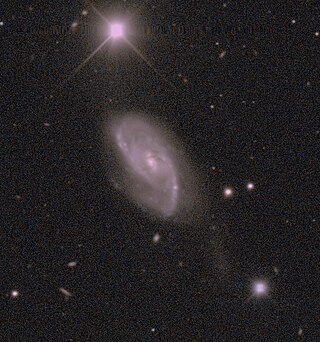1G is the first-generation wireless telephone technology.
1G or 1-G may also refer to:
G4 or G.IV may refer to:

Sagitta is a dim but distinctive constellation in the northern sky. Its name is Latin for 'arrow', not to be confused with the significantly larger constellation Sagittarius 'the archer'. It was included among the 48 constellations listed by the 2nd-century astronomer Ptolemy, and it remains one of the 88 modern constellations defined by the International Astronomical Union. Although it dates to antiquity, Sagitta has no star brighter than 3rd magnitude and has the third-smallest area of any constellation.
Will may refer to:
African or Africans may refer to:
GG may refer to:
G1, G01, G.I, G-1, or G One may refer to:
First or 1st is the ordinal form of the number one (#1).
Q1 or Q-1 may refer to:

The Toyota Chaser is a mid-size car produced by Toyota in Japan. Most Chasers are four-door sedans and hardtop sedans; a two-door hardtop coupé was available on the first generation only. It was introduced on the 1976 Toyota Corona Mark II platform, and was sold new by Toyota at Toyota Vista Store dealerships only in Japan, together with the Toyota Cresta. The Chaser was produced for six generations, and production ceased in 2001, when it was merged with the Cresta to form the short lived Verossa.

The Toyota Motor Corporation G-family engine is a family of straight-6 piston engines produced from 1979 to 2008. It is notable in that only a single displacement, 2.0 L (1,988 cc), was produced in this series. Initially belt-driven OHC non-interference engines, multivalve DOHC and variable valve timing were added later during the production run. The 1G-GEU was Toyota's first mass produced four-valve twincam engine. A prototype version of the 1G-GEU called the LASREα–X, featuring twin-turbos, variable valve timing and intake as well as variable displacement, was fitted to the Toyota FX-1 show car at the 1983 Tokyo Motor Show. It showcased a number of technologies which were later to become commonplace.

9 Aurigae is a star system in Auriga (constellation). It has an apparent magnitude of about 5, making it visible to the naked eye in many suburban skies. Parallax estimates made by the Hipparcos spacecraft put it at about 86 light-years from the solar system, although individual Gaia Data Release 3 parallaxes place all three components at 88 light years.
G is the seventh letter of the Latin alphabet.

IC 2391 is an open cluster in the constellation Vela consisting of hot, young, blueish stars, some of which binaries and one of which is a quadruple. Persian astronomer A. a.-R. al-Sufi first described it as "a nebulous star" in c. 964. It was re-found by Abbe Lacaille and cataloged as Lac II 5.
First generation, Generation I, or variants of this, may refer to:
HD 203857 is a double star in the constellation Cygnus. It is near the lower limit of visibility to the naked eye, having a combined apparent visual magnitude of 6.46. The distance to the primary component is approsimatly 1,230 light years based on parallax, and it has an absolute magnitude of −0.75. The star is drifting closer to the Sun with a radial velocity of −6.3 km/s. It has a stellar classification of K5 and is known to be evolved. The star likely hosts an extrasolar planet, though yet unconfirmed.
H Velorum is a triple star system in the constellation Vela, at a distance of approximately 390 light years.

NGC 66 is a barred spiral galaxy discovered by Frank Muller in 1886, and is located in the Cetus constellation.
The Canvas A1 is a phone co-developed by Google as its Android One initiative and Micromax that runs the Android. The initiative was started by Google to provide an affordable yet feature-rich smartphone for developing nations, India being the first. The initiative is headed by Sundar Pichai.

IRNSS-1G was the seventh and final of the Indian Regional Navigation Satellite System (IRNSS) series of satellites after IRNSS-1A, IRNSS-1B, IRNSS-1C, IRNSS-1D, IRNSS-1E and IRNSS-1F. This system of satellites will provide navigational services to the Indian region. The satellite was launched successfully on 28 April 2016 at 07:20 UTC.

TRAPPIST-1g, also designated as 2MASS J23062928-0502285 g and K2-112 g, is an exoplanet orbiting around the ultra-cool dwarf star TRAPPIST-1, located 40.7 light-years away from Earth in the constellation Aquarius. It was one of four new exoplanets to be discovered orbiting the star in 2017 using observations from the Spitzer Space Telescope. The exoplanet is within the optimistic habitable zone of its host star. It was found by using the transit method, in which the dimming effect that a planet causes as it crosses in front of its star is measured.